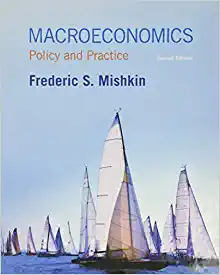Question
Suppose jobs in an industry are either noisy or quiet. Quiet jobs pay $10 per hour. Most workers dislike noise, so they won't work on
Suppose jobs in an industry are either noisy or quiet. Quiet jobs pay $10 per hour. Most workers dislike noise, so they won't work on noisy jobs for $10 per hour. The reservation wages for noisy jobs for the 5 workers in this labor market are the following:
Worker A: $17 per hour
Worker B: $14 per hour
Worker C: $10 per hour
Worker D: $15 per hour
Worker E: $11 per hour
The costs of reducing noise on the job vary by firm. The highest wages firms in this market are willing to pay to get a worker for a noisy job are as follows:
Firm A: $20 per hour
Firm B: $10 per hour
Firm C: $12 per hour
Firm D: $14 per hour
Firm E: $16 per hour
Each worker works only one job, and each firm employs only one worker.
A) Draw a graph of supply and demand in this market (please submit the graph as an attachment).
B) If the wage on the noisy job is $13 per hour, which workers want to work on a noisy job? Which firms want to offer noisy jobs?
C) What is the equilibrium wage for noisy work? How many people work on noisy jobs in equilibrium?
D) Noise is implicitly traded in this labor market. If government regulations require all jobs to be quiet, who suffers? (i.e, which workers/firms gain from the existence of the market for noisy jobs?)
Step by Step Solution
There are 3 Steps involved in it
Step: 1

Get Instant Access to Expert-Tailored Solutions
See step-by-step solutions with expert insights and AI powered tools for academic success
Step: 2

Step: 3

Ace Your Homework with AI
Get the answers you need in no time with our AI-driven, step-by-step assistance
Get Started


